2014年7月8日火曜日
動脈硬化のアルテリオグラフの特徴
Gordons Chemists Launch a new Cardiovascular Screening Clinic
23 May 2014 12:19:30
CardioHealth NI – Give your arteries an MOT!
Gordons Chemists are pleased to offer a new cardiovascular screening clinic.
Statistics indicate that around 60% of the time in heart attack cases, a standard cholesterol or blood pressure test won’t have revealed anything out of the ordinary. Guidelines (published in 2007) from the European Society of Hypertension recommend measuring arterial stiffness in patients with arterial hypertension (high blood pressure).
Gordons Chemists are pleased to offer across Northern Ireland a cardiovascular screening clinic, using a state-of-the-art arteriograph. CardioHealth NI is the first and only company in Northern Ireland that uses an arteriograph; a session with CardioHealth NI at one of our cardiovascular screening clinics is priced at only £50.
A cardiovascular screening using an arteriograph reveals much more than a typical blood pressure or cholesterol test will. By offering this cardiovascular screening clinic, we allow the patient to have a better understanding of the health of their arteries. As such they can make the decision to take control of their cardiovascular health – hopefully reducing the incidence or severity of heart attack, stroke or high blood pressure.
In addition to identifying underlying health problems, the screening includes recommendations on diet and natural health solutions. A detailed report allows the patient to consult with their GP or medical professional in order to seek further advice and treatment, based on the findings of the screening.
The cardiovascular screening clinic is suitable for anyone aged 16 years and over, or anyone with a family history of heart disease, kidney disease or diabetes. It’s also suitable for anyone who drinks alcohol or smokes, is overweight, or participates in (or is returning to) a sport.
About the Arteriograph
An arteriograph is a sophisticated instrument used for detecting changes to the artery walls. The arteriograph uses a cuff that contains special pressure sensors.
These pressure sensors are designed to detect the Pulse Wave (pressure wave) that leaves the heart as it contracts. When the pulse wave reaches the end of the arterial system, it is then reflected back towards the heart. Three key measurements are taken from this pulse wave.
An arteriograph reveals damage to the heart and arteries that a standard blood pressure or cholesterol test will not. It measures parameters that indicate if the patient might at risk of heart attack or stroke, including:
Central Systolic Blood Pressure
This in effect measures blood pressure, at the heart. Studies indicate that this is of greater value than measuring blood pressure on the arm.
Brachial Augmentation
This reveals early damage to, and clogging up of, your smaller arteries. When arterial clogging begins, it occurs firstly in the small arteries of the hands and feet. This can be measured and it indicates the degree of clogging and the damage to the inner lining of your smaller arteries.
Pulse Wave Velocity
The speed of the pressure wave described above is measured over a given distance. An increased speed indicates a clogging of the arteries. There is a direct correlation between this, and an increased risk of heart attack/stroke. The reading is often found to be abnormal in patients with kidney disease, diabetes, sufferers of rheumatoid arthritis, and smokers.
The Arteriograph is a new, easy-to-use, and time-effective method for assessing arterial stiffness. Prior to the arteriograph, there were (and still are) two invasive methods used within a hospital setting: the tonometric and piezo-electronic systems (SphygmoCor and Complior).
An arteriograph is not intended as a replacement for these. Instead, the device is intended for use as a quick, affordable and non-invasive means of diagnosing an underlying condition that the patient may not be aware of. Clinical trials (see below for details) reveal that an arteriograph gives accurate results (which are comparable to the two systems mentioned).
The main advantage of using an arteriograph is that it offers a quick and affordable assessment, using only the upper arm.
Other methods involve a detailed examination and take time to complete. Typically, these (due to the time and expense involved in completing a screening) aren’t readily available at the request of a patient.
CardioHealth NI’s cardiovascular screening clinics offer the patient the opportunity to have a detailed and accurate assessment of their cardiovascular system completed – at a relatively low price, in a location close to them, in just half an hour.
Upcoming clinic detail can be obtained by emailing: info@gordonsdirect.com
Clinical Evidence
Publications on the validation of the Arteriograph device:
• Baulmann, J. et al.
• "A new oscillometric method for assessment of arterial stiffness: comparison with tonometric and piezo-electronic methods"
• J Hypertens 2008, 26:523-528
• http://www.arteriograph.hu/downloads/pdf/Baulmann%20validation-J-Hypert%2708March-Cover.pdf
• Jatoi, N.A., et al.
• “Assessment of arterial stiffness in hypertension: comparison of oscillometric (Arteriograph), piezoelectronic (Complior) and tonometric (SphygmoCor) techniques”
• J Hypertens 2009, 27:2186–2191
• http://www.arteriograph.hu/downloads/pdf/Mahmud-Feely-Compl-Sphygm-Art-JHypert-Oct%2709.pdf
• Boutouyrie P, Revera M and Parati G.
• “Obtaining arterial stiffness indices from simple arm cuff measurements: the holy grail?”
• J Hypertension 2009; 27:2159-2161
• http://www.arteriograph.hu/downloads/pdf/Boutouyrie-Editorial-JHypert-Oct%2709.pdf
• Rajzer MW, Wojciechowska W, Klocek M, Palka I, Brzozowska-Kiszka M, Kawecka-Jaszcz K.
• “Comparison of aortic pulse wave velocity measured by three techniques: Complior, SphygmoCor and Arteriograph.”
• J Hypertens 2008; 26:2001-7
• http://www.arteriograph.hu/downloads/pdf/Marek%20Rajzer%20comp%20study%20with%20ARG.pdf
• Horváth, G.I. et al
• “Invasive validation of a new oscillometric device (Arteriograph) for measuring augmentation index, central blood pressure and aortic pulse wave velocity”
• J Hypertens 2010, 28:2068–2075
• http://www.arteriograph.hu/downloads/pdf/Invasive%20validation%20JoH%202010%2028.pdf
• Parati G, Buyzere de M
• “Evaluating aortic stiffness through an arm cuff oscillometric device: is validation against invasive measurements enough?"
• Journal of Hypertension 2010, 28:2003–2006
• http://www.arteriograph.hu/downloads/pdf/Parati%20Editorial%20Comment%20on%20invasive%20validation.pdf
登録:
コメントの投稿 (Atom)
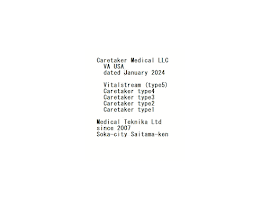





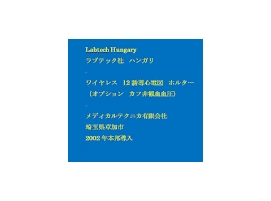



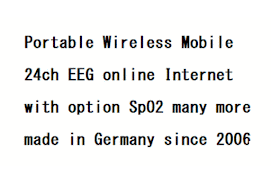
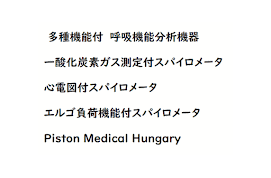
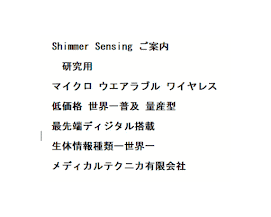


0 件のコメント:
コメントを投稿